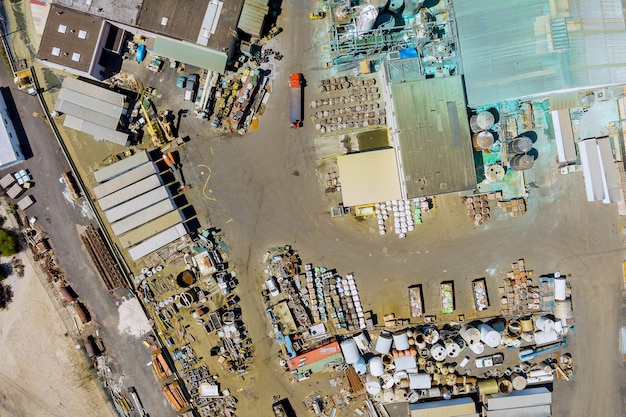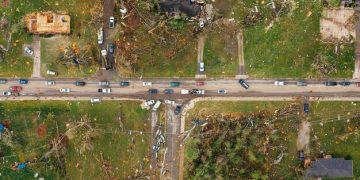Navigating International Aid in US Disaster Zones: A Comprehensive Guide

Navigating the complexities of international aid distribution in US disaster zones involves understanding legal frameworks, coordinating with local organizations, ensuring cultural sensitivity, and maintaining logistical efficiency to provide effective and timely relief.
The United States, despite its resources, sometimes requires international assistance following major disasters. Navigating the complexities of international aid distribution in US disaster zones involves understanding a multifaceted landscape of legal requirements, logistical challenges, and coordination imperatives.
Understanding the Need for International Aid in US Disaster Zones
While the United States possesses substantial disaster response capabilities, there are instances where the scale and scope of a disaster overwhelm local and national resources. International aid can then become a critical supplement, providing specialized expertise, equipment, and financial support to augment existing efforts.
Several factors can contribute to the necessity of international assistance, including the magnitude of the disaster, the geographic area affected, and the specific needs of the impacted population. Coordination is key.
Circumstances Requiring International Aid
The rationale for accepting international aid in the US can stem from a variety of factors. Understanding these circumstances helps in appreciating the role and necessity of foreign assistance.
- Overwhelming Magnitude of Disaster: Catastrophes like Hurricane Katrina or major earthquakes can exceed local and national response capacities.
- Specific Expertise or Equipment: International teams may possess specialized skills or equipment, such as advanced search and rescue capabilities or field hospitals, not readily available domestically.
- Bridging Resource Gaps: Foreign aid can fill critical gaps in resources, including medical supplies, food, water, and temporary shelter.
- Humanitarian Considerations: Acceptance of aid can signal solidarity and foster goodwill, strengthening diplomatic ties.

International aid is not just about material assistance; it also involves a collaborative spirit that can significantly boost morale and efficiency in the face of devastation. Navigating this requires careful planning and execution.
Legal and Regulatory Frameworks Governing Aid Distribution
Distributing international aid within the United States is not simply a matter of goodwill; it is governed by a complex web of laws and regulations. These frameworks are designed to ensure accountability, transparency, and compliance with both US and international standards.
Understanding these frameworks is crucial for any organization or entity involved in providing or facilitating international aid. Failure to comply can result in delays, penalties, or even the rejection of assistance.
Key US Laws and Regulations
Several key pieces of legislation and regulatory frameworks dictate how international aid can be received, distributed, and managed within the US. Here are some of the most relevant.
- Stafford Act: This act forms the basis for much of the federal disaster response, including the acceptance of international aid. It outlines the procedures for declaring a disaster and allocating federal resources.
- Foreign Assistance Act: While primarily focused on US aid to foreign countries, this act also touches on the parameters for accepting aid from foreign governments and organizations.
- Customs Regulations: Importing goods for disaster relief purposes is subject to specific customs regulations, often expedited or waived during emergencies, but still requiring adherence to certain protocols.
- State Laws: Individual states may have their own laws and regulations governing disaster response and the acceptance of aid, which must be considered.
Compliance with these laws and regulations requires diligent record-keeping, clear communication with relevant agencies, and a commitment to transparency in all aid-related activities. Ignoring these can lead to further complications.
Coordinating with FEMA and Local Organizations
Effective aid distribution hinges on seamless coordination between international organizations, the Federal Emergency Management Agency (FEMA), and local entities. This collaboration ensures that aid is delivered efficiently and effectively to those who need it most.
Establishing clear lines of communication, understanding the roles and responsibilities of each stakeholder, and adhering to established protocols are essential for successful coordination. Failure to do so can result in duplication of efforts, misallocation of resources, and delays in assistance.

Best Practices for Coordination
Achieving effective coordination requires a proactive and collaborative approach. Consider these best practices.
- Establish Communication Channels: Set up clear and reliable communication channels with FEMA, state and local emergency management agencies, and other relevant organizations.
- Participate in Coordination Meetings: Attend coordination meetings and briefings to stay informed about the evolving situation and to share information about available resources and capabilities.
- Align with Local Priorities: Ensure that aid efforts align with the priorities and needs identified by local authorities and affected communities.
- Share Information: Be transparent about the types and quantities of aid being provided, as well as the intended recipients and distribution methods.
Coordination is an ongoing process that requires flexibility, adaptability, and a willingness to work collaboratively with all stakeholders. This collaborative spirit is crucial for effective disaster response.
Challenges in Logistical Support: Transportation, Warehousing, and Security
Logistical hurdles often present significant obstacles in the effective distribution of international aid. Successfully navigating these challenges requires careful planning, resourcefulness, and collaboration with local authorities and organizations.
Transportation bottlenecks, inadequate warehousing facilities, and security concerns can all impede the timely and efficient delivery of aid to those who need it most. Addressing these issues requires a proactive and comprehensive approach.
Overcoming Logistical Challenges
To mitigate logistical challenges, a multifaceted approach is necessary. This includes leveraging existing infrastructure, establishing contingency plans, and ensuring adequate security measures.
- Transportation: Utilize a combination of ground, air, and sea transportation to move aid from ports of entry to distribution points. Coordinate with local transportation providers to overcome road closures and other obstacles.
- Warehousing: Secure adequate warehousing space to store and manage aid supplies. Consider using temporary storage facilities or collaborating with local businesses to utilize existing warehouse capacity.
- Security: Implement security measures to protect aid supplies and personnel from theft, damage, or violence. Coordinate with local law enforcement and security agencies to ensure a safe and secure operating environment.
- Community Engagement: Engage with the local community, understanding their needs and involving them in the distribution process to ensure aid reaches those who need it most effectively.
Addressing logistical challenges requires a proactive and collaborative approach, working closely with local communities, government agencies, and other stakeholders to ensure that aid reaches those who need it most in a timely and efficient manner.
Cultural Sensitivity and Community Engagement
Effective aid distribution goes beyond simply delivering supplies; it requires a deep understanding of local cultures, customs, and sensitivities. Engaging with the affected community in a respectful and culturally appropriate manner is essential for building trust and ensuring that aid efforts are well-received and effective.
Cultural insensitivity can undermine aid efforts, creating resentment and distrust. By taking the time to understand and respect local customs, organizations can build stronger relationships with the community and ensure that aid is delivered in a way that is both effective and culturally appropriate.
Strategies for Cultural Sensitivity
Several strategies can help organizations navigate cultural differences and engage with communities in a sensitive and respectful manner.
- Language Skills: Deploy personnel who speak the local language or can communicate effectively through interpreters.
- Local Customs: Familiarize yourself with local customs, traditions, and social norms. Avoid behaviors that may be considered offensive or disrespectful.
- Community Leaders: Engage with community leaders and elders to seek their guidance and support. Involve them in the planning and implementation of aid efforts.
- Feedback Mechanisms: Establish mechanisms for receiving feedback from the community about aid efforts. Use this feedback to make adjustments and improvements.
Cultural sensitivity and community engagement are not simply add-ons to aid efforts; they are integral to ensuring that aid is delivered effectively and sustainably. This requires a commitment to understanding and respecting local cultures and customs, as well as a willingness to engage with communities in a meaningful and respectful manner.
Ensuring Accountability and Transparency in Aid Distribution
Maintaining accountability and transparency is paramount in international aid distribution to ensure that resources are used effectively and reach the intended recipients. Clear procedures, meticulous record-keeping, and open communication are essential for building trust and preventing corruption or misuse of funds.
Lack of transparency can erode public trust and undermine the effectiveness of aid efforts. By prioritizing accountability and transparency, organizations can demonstrate their commitment to responsible stewardship of resources and ensure that aid efforts are aligned with the needs and priorities of the affected community.
Accountability Best Practices
To promote accountability and transparency, organizations should implement the following best practices.
- Tracking and Reporting: Establish systems for tracking aid supplies from the point of entry to the final distribution point. Maintain detailed records of all aid received, distributed, and used.
- Auditing: Conduct regular audits of aid operations to identify and address any weaknesses or vulnerabilities.
- Reporting Mechanisms: Establish clear reporting mechanisms for aid workers and beneficiaries to report concerns or complaints.
- Codes of Conduct: Develop and enforce codes of conduct that prohibit corruption, fraud, and other unethical behaviors.
Prioritizing accountability and transparency is not simply a matter of compliance; it is a fundamental ethical obligation. By adhering to the highest standards of accountability and transparency, organizations can demonstrate their commitment to responsible stewardship of resources and ensure that aid efforts are aligned with the needs and priorities of the affected community.
| Key Point | Brief Description |
|---|---|
| 🔑 Legal Frameworks | Understanding and adhering to US laws and regulations. |
| 🤝 Coordination | Working with FEMA and local organizations. |
| 🚚 Logistics | Managing transportation, warehousing, and security. |
| 🌍 Cultural Sensitivity | Engaging with communities respectfully. |
Frequently Asked Questions
▼
FEMA coordinates federal disaster response efforts, including assessing the need for international aid and integrating it into the overall relief strategy. They work to ensure that aid is aligned with local needs.
▼
Organizations can ensure cultural sensitivity by deploying bilingual personnel, engaging with community leaders, and adapting aid delivery methods to align with local customs and traditions. Training is key.
▼
The main challenges include transportation bottlenecks, limited warehousing capacity, and security concerns. These can be addressed through strategic planning and collaboration with local authorities and other organization.
▼
Accountability is maintained through meticulous tracking of supplies, regular internal and external audits, and robust reporting mechanisms that allow beneficiaries to voice concerns. Transparency is key.
▼
Key laws include the Stafford Act, Foreign Assistance Act, and relevant customs regulations. These laws dictate how aid is received, distributed, and managed, ensuring compliance with US and international standards.
Conclusion
Successfully navigating the complexities of international aid distribution in US disaster zones requires a comprehensive understanding of legal frameworks, logistical challenges, cultural sensitivities, and coordination imperatives. By prioritizing these elements, organizations can ensure that aid efforts are effective, efficient, and aligned with the needs of affected communities.





